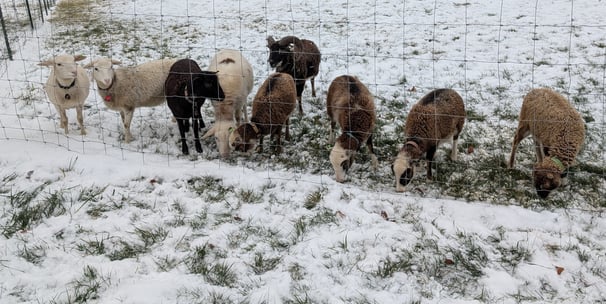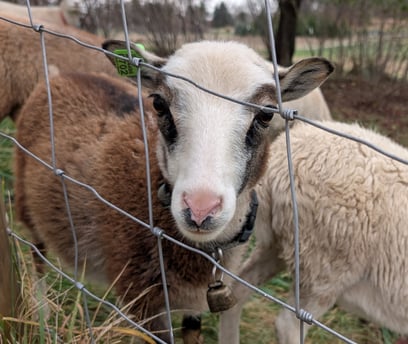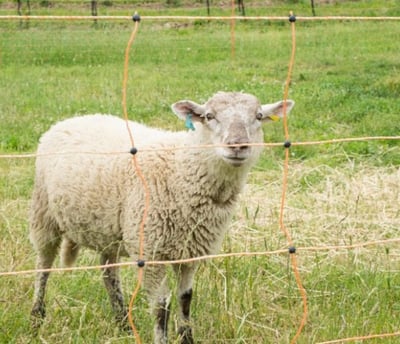Building Trust
Building trust with sheep, naturally wary prey animals, is a rewarding process that requires significant patience, consistency, and a calm approach. Not every sheep will become a cuddly pet, as individual temperaments and breed characteristics vary greatly, but with the right methods, many can learn to trust you enough to eat from your hand and even tolerate or enjoy petting.
Here’s a guide to building that trust:


Core Principles
Patience is Paramount: This is the most important rule. You cannot rush trust. Let the sheep set the pace. Some may warm up in weeks, others might take months, and some may always remain reserved.
Be Calm & Predictable: Move slowly and deliberately around your sheep. Speak in a low, calm voice. Avoid sudden movements, loud noises, and direct, prolonged eye contact, which can seem threatening. Try to approach them a little from the side, rather than head-on.
Be Consistent: Spend time with your sheep regularly, ideally daily, even if it's just for a few minutes. Consistent, positive interactions build familiarity and reduce fear.
Respect Their Space (Flight Zone): Understand that sheep have a "personal bubble." Observe how close you can get before they move away. Initially, work just outside this zone, gradually decreasing the distance as they become more comfortable. Never chase them.
Positive Reinforcement: The key is to make them associate your presence with good things – primarily food and safety.
Step-by-Step Guide to Building Trust
Step 1: Just Be Present
Goal: To get the sheep used to you being in their space without any pressure.
How: Go into their paddock or pasture and simply be there. Bring a chair or bucket and sit quietly. Read a book, or just observe them indirectly.
Key: Don't try to approach them. Let them get curious and decide if they want to investigate you. They might watch you from a distance, then inch closer over time. Do this for several sessions.
Step 2: Introduce the "Call" and Bucket
Goal: To teach them that you (and your specific call) bring a desirable reward.
How: As discussed in grain training, choose a unique call (a word, whistle, or bucket rattle).
Start by making your call and placing a small amount of a high-value treat (like grain or sheep-safe pellets) in a low trough or pan.
Step back a considerable distance and let them approach.
Repeat this over many sessions, gradually decreasing the distance you step back each time.
Eventually, hold the bucket while they eat, staying still and calm.
Step 3: Hand Feeding
Goal: To have them willingly eat directly from your hand. This is a significant trust milestone.
How:
Prerequisite: Only attempt this once they are very comfortable eating from a bucket you are holding.
Offer: Hold a small amount of grain in your flat, open palm. Kneel or sit to appear less intimidating, and hold your hand low and steady.
Wait: Do not reach out. Let them approach you. They might sniff, nudge, and back away several times. Be patient and still.
The Brave One: Usually, one bolder sheep will be the first to try. Once it eats without issue, others are much more likely to follow its lead.
Keep it Positive: Let them eat and move away freely. Don't try to touch or restrain them during these initial hand-feeding sessions. Keep sessions short.
Step 4: Introducing Touch (Petting)
Goal: To get them comfortable with, and potentially enjoy, physical contact.
How:
Timing: Only attempt this when they are relaxed and comfortable eating from your hand or standing very close to you.
Approach: While they are distracted eating from your hand or a bucket, slowly bring your other hand up.
Where to Touch: Avoid reaching over the top of their head, as this mimics a predator. The best places to start are usually the chest, under the chin, or the side of the neck/shoulder.
Gentle Start: Offer the back of your hand for them to sniff first. Then, try a gentle scratch or stroke.
Read Their Body Language: This is crucial. If they tense up, flinch, jump back, or stop eating, immediately stop touching and hold still or slowly pull back. This tells them you respect their boundaries.
Find Their Spot: If they tolerate the touch, try gentle scratches. Some sheep love a good scratch on the chest or behind the ears once they trust you. You'll know they enjoy it if they lean into it, stay still, or even close their eyes.
Keep it Brief: Start with just a few seconds of petting and gradually increase the duration as they show comfort.


Important Reminders
Not All Sheep are Cuddly: Some individuals or breeds (like Soay, which are more primitive) may never fully enjoy being petted, even if they trust you enough to hand-feed. Respect their individual personalities.
Patience Wins: This process can take weeks or even months. Don't get discouraged. Every small step forward is a victory.
Safety: Even friendly sheep can accidentally bump or step on you, especially when excited about grain. Be aware of your surroundings and footing.


